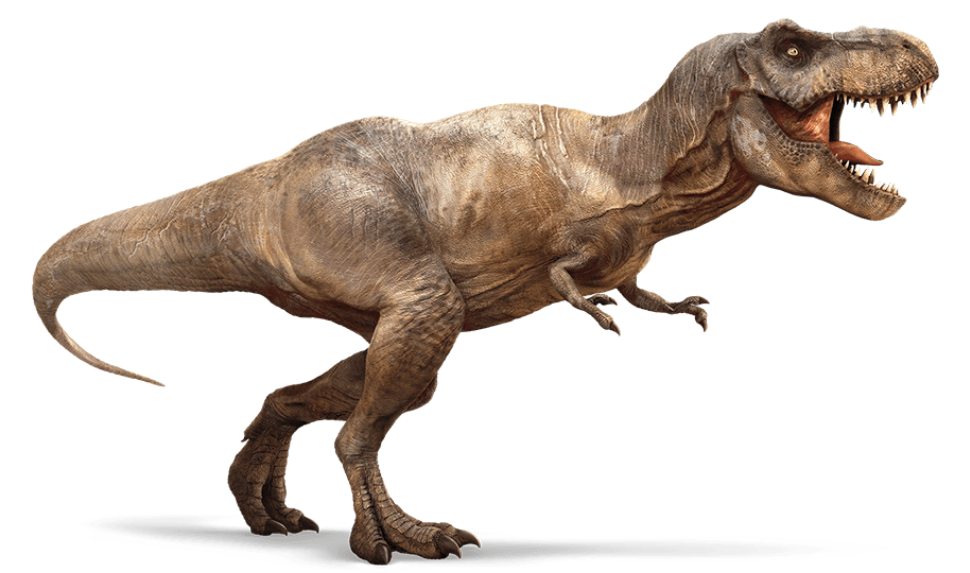Paleontologists: a person could run away from a tyrannosaur if he tried

An imprint of a Tyrannosaurus trail, which scientists are trying to determine at what speed the animal was moving
The giant reptiles of the past are amazing. Small and large dinosaurs, flying dinosaurs, flying and floating - they were all amazing creatures. But if an ordinary person does not know much about most dinosaurs, that he knows, if he has heard anything at all, then everyone knows about tyrannosaurs. They have been shown in movies, cartoons so many times, described in science fiction works, that, probably, there are very few people on Earth who have not heard of this “king of dinosaurs”.
In Hollywood films, tyrannosaurs are shown with special care. Muscular hind limbs, big growth, huge teeth - very few people can hide from such a monster, it will overtake anyone. But, as it turned out, the films are somewhat different from reality. Paleontologists claim that tyrannosaurs were much slower than they thought, so an ordinary healthy person could run away from a predator pursuing him. Provided that this ordinary person can run fast.
Initially, scientists calculated the maximum speed of movement of a tyrannosaur, based on its muscle mass. If we assume, starting from this base, it turns out that the speed of the giant is about 30 km / h. Few people are able to escape from this tank of muscles and bones running so fast, right? But the other day a group of paleontologists presented corrected calculations , which are based not only on muscle mass, but also on the structural features of the T.Rex skeleton. As a result, the result was much more modest - 20 km / h at full speed. Yes, this is also a lot, but a person, meaning a completely healthy individual, could have escaped from a tyrannosaur.
And if we take into account the fact that many small reptiles ran faster than humans, then the Tyrannosaurus Rex did not have such a large selection of "dishes". Overtake small theropods , for example, he was not able to. Scientists say that if this giant would decide to go to the trot, then the legs under the weight of the body would simply have broken. “Tyrannosaurus is probably the most popular dinosaur of the whole family, so paleontologists have long argued about how fast it was. If we figure this out, we’ll understand what hunting methods were used by a tyrannosaur and how it caught up with its victims, ” said the head of the research team, William Sellers.
Paleontologists study dinosaurs not only from the remains, they also use modern technologies - for example, software platforms for recreating the appearance of dinosaurs and simulators of their movements. It was just such a model that showed that tyrannosaurs could not run, because their skeleton, although strong enough, would not withstand the additional load when running. This means that the "king of the dinosaurs" could only count on good luck when hunting for small reptiles. But not too fast large dinosaurs - suitable for tyrannosaur prey.

Presumably, that was what Tyrannosaurus looked like.
Paleontologists who conducted a simulation of the movement of a tyrannosaur, showed that not every human being could have escaped from this dinosaur. In the same "Jurassic Park" this could be done by a few units of characters in the film. Jeff Goldblum would surely have fallen prey to the monster if he had not hidden in the car. Professor Stellers says that the older the tyrannosaur was, the slower it became as it got harder and harder. As he grew older, his methods of hunting would change.
Confirmation of the model obtained by paleontologists, could be obtained if scientists discovered a chain of traces of a hurrying tyrannosaurus. Unfortunately, so far such chains have not been found. All that is - prints of paws of a tyrannosaur on a clay soil, once the former coast of the sea. On slippery clay, enormous predators were not very comfortable walking, not to mention running, and the prints were not very clear. Therefore, it is not necessary to speak about the possibility of estimating the speed of movement of a tyrannosaur on such tracks. But, perhaps, in the future, the necessary prints will be found, and then there will be a full stop on the question of the speed of movement of living tanks.
By the way, besides the current study, there were others. A separate group of paleontologists tried to understand the speed with which Tyrannosaurus went, which left a fairly clear mark on the ground. As it turned out, this figure was 11 kilometers per hour. Of course, almost anyone could have escaped such a tyrannosaur. But do not forget that, perhaps, the animal in question went slowly, resting after a hearty breakfast, lunch or dinner.
All Articles